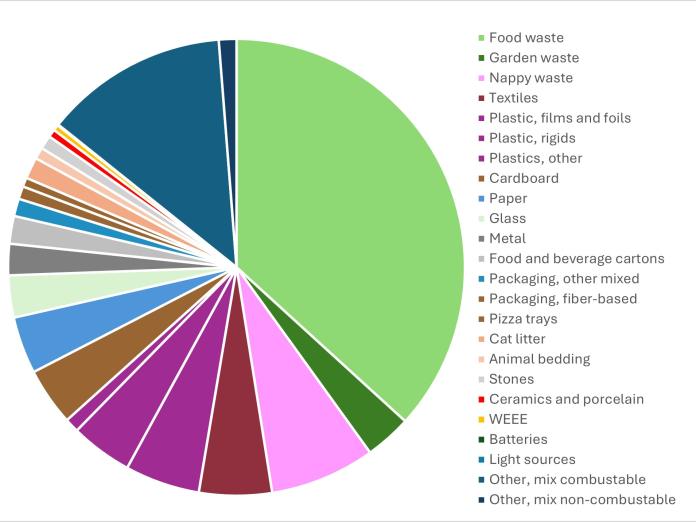How many recyclables ends in the residual waste stream in Copenhagen?
Residual waste is the waste that the citizens do not sort for recycling. In 2023, just under 100.000 tons of residual waste was generated in Copenhagen.
- Food waste is by far the largest fraction of the residual waste at over 36,000 tonnes.
- The residual waste contains more than 10,000 tonnes of plastic waste.
- Nappy waste constitutes a significant amount of the residual waste of approximately 7,500 tonnes.
- The amount of textile waste in the residual waste is significant at over 5,100 tonnes
- The residual waste contains approximately 4,000 tonnes of paper and a corresponding amount of cardboard.
- The residual waste contains almost 3,000 tonnes of glass and more than 2,200 tonnes of metals.
- Garden waste makes up approximately 3,200 tonnes of the residual waste

Composition of the residual waste in Copenhagen in 2023
How do we increase reuse and recycling?
Copenhagen works continuously to improve the reuse and recycling of the many waste resources and to minimize the amount of waste that ends up in incineration. Find more information about the work with the individual waste fractions: